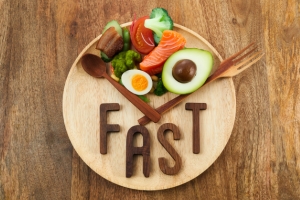So, you’ve decided to embark on the low-carb journey? Fantastic! It can be a truly transformative approach to health, energy, and weight management. But, like any significant dietary shift, it comes with a learning curve. I’ve been there, made my share of blunders, and learned valuable lessons along the way. To help you navigate this path more smoothly (and avoid some common frustrations!), I’m sharing the top 10 low-carb pitfalls I’ve encountered, along with practical strategies to sidestep them.
1. Electrolyte Imbalance & Dehydration: The Dreaded “Keto Flu”

This is arguably the most common and impactful mistake. When you drastically reduce carbohydrates, your insulin levels decrease. Lower insulin signals your kidneys to excrete more sodium, and water follows along with it. This rapid loss of sodium, along with potassium and magnesium, can lead to the infamous “keto flu”: headaches, fatigue, muscle cramps, brain fog, and even heart palpitations. It’s not mandatory, and often happens with a drastic, sudden carb reduction.
The Fix: Proactive Electrolyte Replenishment
Be proactive about replenishing electrolytes.
- Sodium: Aim for 3,000-5,000 mg per day (this is more than on a standard diet). Don’t be afraid to salt your food liberally, and consider adding bouillon or bone broth to your daily routine.
- Potassium: Aim for 1,000-3,500 mg per day. Good low-carb sources include avocados, spinach, and salmon. You might need a supplement if you struggle to get enough from food.
- Magnesium: Aim for 300-400 mg per day. Leafy greens, nuts, and seeds are good sources, but many people find a supplement (magnesium citrate or glycinate) helpful.
- Hydration: Drink at least 2-3 Liters of water every day.
2. Fear of Fat: Not Eating Enough Healthy Fats

This might seem strange, but on a low-carb diet, fat becomes your primary energy source. If you’re skimping on healthy fats, you’ll likely feel tired, hungry, and irritable. This is a common mistake driven by decades of low-fat diet dogma.
The Fix: Embrace Healthy Fats
Include sources like avocados, olive oil, coconut oil, nuts, seeds, fatty fish, and full-fat dairy (if tolerated) in your meals. Don’t be afraid to add a generous drizzle of olive oil to your salad or cook your vegetables in butter.
3. The Protein Puzzle: Too Much or Too Little?

Protein is essential for maintaining muscle mass, but it’s not the primary fuel source on a low-carb diet. Excessive protein can be converted to glucose through gluconeogenesis, potentially hindering ketosis. On the other hand, too little protein can lead to muscle loss, especially if you’re physically active. Protein needs vary.
The Fix: Find Your Protein Sweet Spot
A general guideline is 0.8 grams of protein per kilogram of ideal body weight for sedentary individuals. For those who are moderately active or trying to build muscle, 1.2-1.7 grams per kilogram may be more appropriate. Athletes or those engaged in intense training may need even more, potentially up to 2.2 grams per kilogram. Experiment and see what feels best for your body.
4. The “All-or-Nothing” Trap: Striving for Perfection

This is a psychological trap more than a physiological one, but it’s incredibly damaging. Many beginners believe they must be perfectly low-carb 24/7. Any deviation feels like failure, leading to discouragement and abandonment of the diet.
The Fix: Aim for Consistency, Not Perfection
One “off-plan” meal or snack won’t ruin your progress. Acknowledge it, learn from it (perhaps you were unprepared?), and simply get back on track with your next meal. Sustainability is key, and a rigid, all-or-nothing approach is rarely sustainable long-term. Some people even find that strategically incorporating higher-carb days (e.g., around intense workouts) can be beneficial.
5. Ignoring Fiber: The Importance of Gut Health

Cutting carbs doesn’t mean eliminating all fiber. Fiber is crucial for digestive health, regularity, and satiety. It also feeds the beneficial bacteria in your gut, which play a role in overall health.
The Fix: Prioritize Low-Carb, High-Fiber Foods
Aim for 25-30 grams of fiber per day. Here’s a helpful table:
| Food | Fiber (per 100g) | Serving Example | Fiber in Serving |
|---|---|---|---|
| Broccoli | 2.6g | 1 cup (91g) chopped | 2.4g |
| Avocado | 7g | 1/2 medium avocado (68g) | 4.8g |
| Chia Seeds | 34g | 1 tablespoon (12g) | 4.1g |
| Spinach | 2.2g | 1 cup (30g) raw | 0.7g |
| Almonds | 13.3g | 1/4 cup (35g) | 4.6g |
6. The “Low-Carb” Processed Food Trap

The food industry has capitalized on the low-carb trend, offering a plethora of “low-carb” bars, snacks, and treats. Many of these are highly processed and contain questionable ingredients.
The Fix: Read Labels Carefully and Choose Whole Foods
- Look out for hidden sugars (maltodextrin, dextrose, and other names ending in “-ose”).
- Avoid unhealthy fats (hydrogenated or partially hydrogenated oils).
- Be wary of artificial sweeteners. While some are generally considered safe (like stevia and erythritol), others, like maltitol, can still spike blood sugar and insulin in some individuals.
- Focus on whole, unprocessed foods: vegetables, meats, fish, eggs, nuts, seeds, and healthy fats.
7. Failing to Plan: The Importance of Preparation

Low-carb eating requires more planning than a standard diet, especially in the beginning. If you’re caught unprepared, you’re more likely to make impulsive, high-carb choices.
The Fix: Meal Prep and Smart Snacking
- Meal Prep: Cook batches of low-carb meals on the weekends to have readily available options during the week.
- Smart Snacking: Keep these low-carb snacks on hand:
- Hard-boiled eggs
- Nuts and seeds (almonds, walnuts, macadamia nuts)
- Cheese sticks
- Celery sticks with almond butter
- Beef jerky (check for added sugar)
- Restaurant Strategy: Check online for the restaurant menu, to plan ahead what is best to consume.
8. Neglecting Overall Nutrient Intake

Focusing solely on reducing carbs can sometimes overshadow the importance of obtaining a balanced intake of all essential nutrients.
The Fix: Prioritize Variety and Consider Supplementation
Make a concious effort to include a wide variety of non-starchy vegetables, and quality protein sources. Consider a multivitamin if you have some nutritional concerns.
9. The Comparison Trap: Focusing on Your Own Journey

Everyone’s body is unique, and we all respond to dietary changes differently. Genetics, activity levels, pre-existing conditions, and even gut microbiome composition can influence results. Comparing yourself to someone else’s progress is a recipe for frustration.
The Fix: Focus on Your Progress, Listen to Your Body
Track your progress, listen to your body, and celebrate your achievements.
10. Giving Up Too Soon: Patience and Persistence

Adapting to a low-carb lifestyle takes time. Your body needs to shift from primarily burning glucose to burning fat for fuel. This metabolic shift, often called “fat adaptation,” can take several weeks or even months.
The Fix: Stay the Course and Trust the Process
- Understand that the initial phase can have some uncomfortable symptoms.
- Don’t expect a drastic weight loss in the very first week. *Be consistent with your plan.
The Bottom Line
The low-carb lifestyle offers numerous potential benefits, but navigating it successfully requires awareness and mindful choices. By avoiding these common mistakes, you’ll be well on your way to achieving your health goals. Start by addressing one mistake this week, and gradually incorporate the other strategies. Remember, this is about creating a sustainable, healthy way of eating that works for you in the long run. And consider this: studies show that roughly 80% of individuals who successfully avoid these common low-carb pitfalls achieve their health and weight-loss objectives within a three-month timeframe! So, stay informed, stay persistent, and enjoy the journey!







